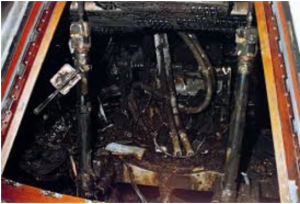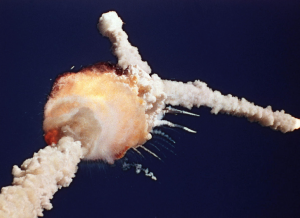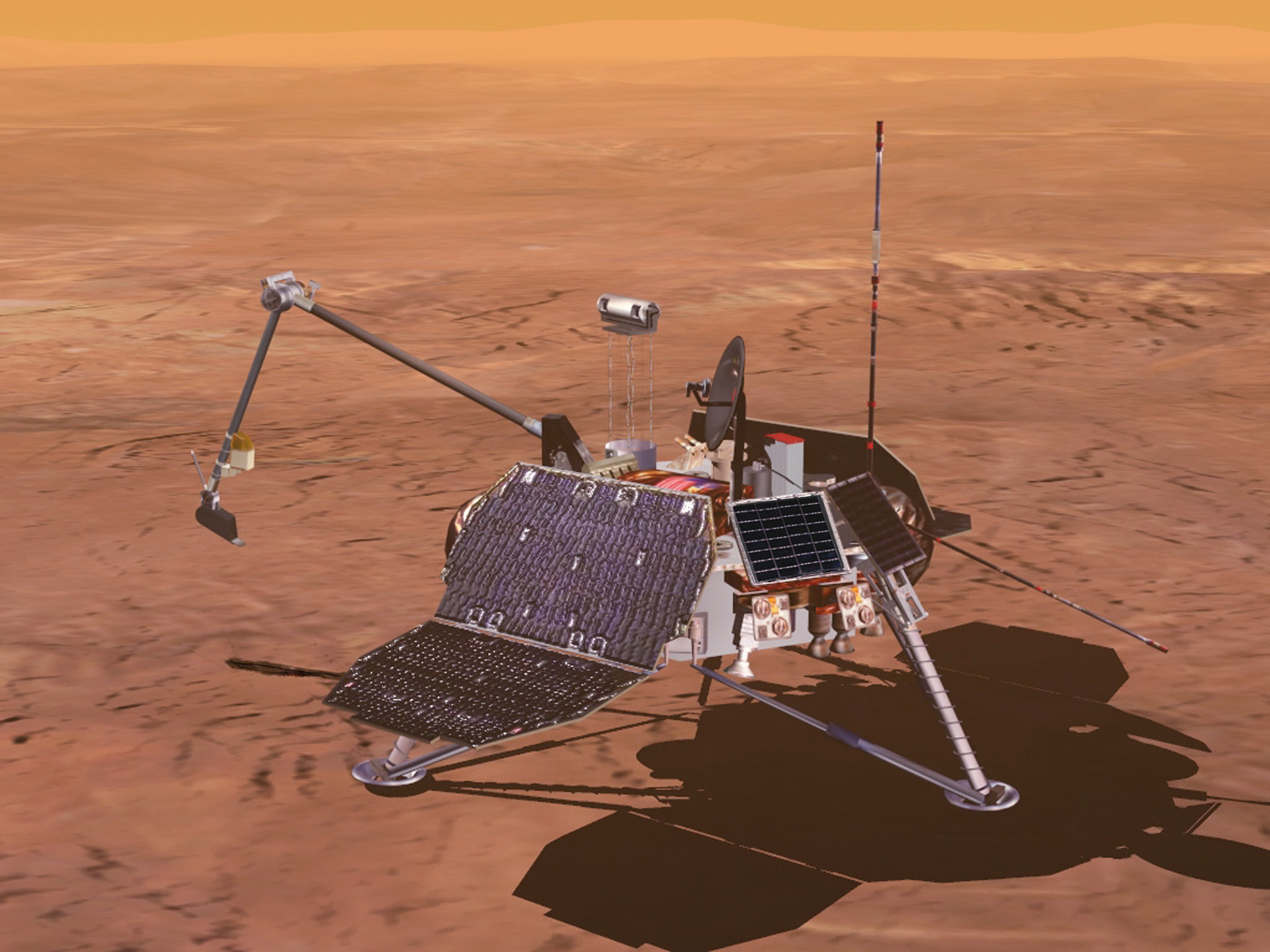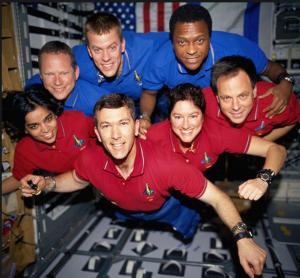Space Missions: Learning From the Mistakes
By Megan Blais, Janaya Bundgaard, Tatum Mueller, Cooper Olson and Kody Farrow
Over sixty years ago, a ground-breaking advancement was made in the world of astronomy. The first ever satellite to be successfully sent into space was launched by the Soviet Union, opening new doors into the study of space. Continuous adaptations to the field of study led to bigger achievements. Within a year of the first satellite launch, the Soviet Union launched the first human being in spaceflight. With many successes in the history of space exploration, there has also been a fair share of failures. When looking back on the causes of failed missions, we are often able to investigate and identify what specifically caused it to be unsuccessful. How have the failed space missions of the past allowed the science of space travel to evolve into the progressive field of science that it is today? We have been able to grow and learn from the mistakes that were made and use it to create successful missions in the future. Every past failure has led to the positive steps being taken in the study of space travel today.
Edwin Aldrin on the moon- 1969 https://images.nasa.gov/details-as11-40-5875.html
Apollo 1
NASA began the Apollo missions with the intent to successfully launch the first manned mission. On January 27 1967, the NASA agency performed a test launch for Apollo 1. There was a malfunction in the command module which caused a major flash fire leading to fatalities. This was due to a combination of exposed wires, and flammable materials like nylon and padding in a pure oxygen environment.This pure oxygen state was due to a leakage in the crew’s suits.
http://abc13.com/remembering-apollo-1/1176719/
Oxygen is an oxidizing agent and when mixed with flammable materials, increased temperature, pressure, static electricity, and many other variables becomes very combustible. The flash fire could have be everted but there were also other complications with the hatch door to escape and communication between crew members and technicians. Unfortunately, it cost the lives of others for the agency to make improvements on the Apollo mission.
https://commons.wikimedia.org/wiki/File:Apollo_1_fire.jpg
 These improvements started after they completed the investigation of the fire. The initial step was to take photographs in an “as-found condition” before disassembly. Overall more than 5000 photos were taken before and during the disassembly of the command module. Thorough research was done and was passed through board members; the data was then formulated into a list of conditions that caused the incident. From there they were able to make changes accordingly, and these improvements led to the success of the Apollo missions.
These improvements started after they completed the investigation of the fire. The initial step was to take photographs in an “as-found condition” before disassembly. Overall more than 5000 photos were taken before and during the disassembly of the command module. Thorough research was done and was passed through board members; the data was then formulated into a list of conditions that caused the incident. From there they were able to make changes accordingly, and these improvements led to the success of the Apollo missions.
Soyuz 11
The accident of The Soyuz 11 space mission took place on June 30, 1971. Although the incident lead to the deaths of three Soviet cosmonauts, it helped progress space travel as a whole. The deaths of the three cosmonauts was determined to be caused by a failure in cabin pressure while re-entering the atmosphere. This was caused by the ventilation valve between the two modules opening during their descent. This failure in ventilation was caused when all twelve of the fuel rockets fired at one time, instead of separately. With all of the rockets exploding at once, the pressure was too large for the valve to handle and it opened prematurely, which killed the cosmonauts inside. The landing shuttle that they were deployed in remained undamaged, which made the retrieval crew believe that the cosmonauts were still alive. The discovery of the tragedy sparked many conspiracies throughout the space missions community, until Soviet Professor Bushuyev revealed to NASA what had caused the crash. The discovery of what had caused the tragedy allowed space missions in the future to become much more safe.
Soyuz 11 helped future space missions in the strategy and execution of re-entering the atmosphere. With it being one of the earliest recorded re-entry accidents, it allowed future missions to think more carefully about that aspect of the space missions.
Space Shuttle Challenger
The disaster of the Space Shuttle Challenger on January 28th, 1986, took the lives of all crew members on board. Within the first couple minutes of the launch, an explosion occurred and the aircraft broke off into multiple pieces. The source of the explosion was caused by an engineering mishap, specifically with the failure of the o-rings. The o-rings are the seals in the joints which connect the rocket boosters. Through the investigation after the fact it was brought to light that the engineers who were responsible for making the boosters did have previous concerns of flexibility and durability. Another misfortunate decision was that they allowed the launch to happen when they knew the weather conditions were not ideal for the rubber o-ring material. It was deemed unpredictable when temperatures in the atmosphere were below 30 degrees. The rather chilly weather on the day of the launch affected the outcome of this unfortunate disaster. Although the concern was voiced by many, ultimately the decision was made to launch due to money and not wanting to push back the launch date yet again.
https://www.cbsnews.com/pictures/challenger-shuttle-disaster/
 After the fact, NASA was put under intense scrutiny for the pressure they put on to launch the mission that day. They were also harshly judged for having many flaws within their program. NASA had to deal with the financial backlash of the disaster, pushing other scheduled trips back due to lack of funds. Another issue and concern came from society who felt for the astronauts on the aircrafts and their families. The safety of those individuals were swept aside to meet deadlines and to stay on budget. Throughout the years following this accident, NASA made a few changes. The culture of their company was reformed and based on safety and taking all precautions necessary. Not letting financial issues determine all outcomes was important to them in moving forward and improving. This disaster touched many lives. The individual’s who lost their lives that day, are recognized and appreciated to this day.
After the fact, NASA was put under intense scrutiny for the pressure they put on to launch the mission that day. They were also harshly judged for having many flaws within their program. NASA had to deal with the financial backlash of the disaster, pushing other scheduled trips back due to lack of funds. Another issue and concern came from society who felt for the astronauts on the aircrafts and their families. The safety of those individuals were swept aside to meet deadlines and to stay on budget. Throughout the years following this accident, NASA made a few changes. The culture of their company was reformed and based on safety and taking all precautions necessary. Not letting financial issues determine all outcomes was important to them in moving forward and improving. This disaster touched many lives. The individual’s who lost their lives that day, are recognized and appreciated to this day.
Mars Surveyor ‘98 Program
In 1992, Dan Goldin was named as the new NASA administrator, and brought with him a philosophy of “better, faster, cheaper”. For years, NASA had focused on large scale, expensive projects that took years of design. Mr. Goldin streamlined NASA’s operations by cutting a third of their staff and changed the Kennedy Space Center’s operations to a single private contractor. As a result, NASA began to run more like a business, which dampened morale at the KSC and loosened the rigorous security checks that a multiple contractor approach does (1).

The Mars Polar Lander Rendering
This file is in the public domain in the United States because it was solely created by NASA. NASA copyright policy states that "NASA material is not protected by copyright unless noted".
In 1998, NASA launched the Mars Surveyor ‘98 Program, an initiative to study the climate, weather, and atmosphere of Mars to better understand long term climate change. The mission was made up of two seperate spacecraft: the Mars Climate Orbiter and the Mars Polar Lander (which itself held two surface-penetrator probes called Deep Space 2). All components of the mission ultimately failed. The Climate Orbiter was launched on December 11, 1998. It was intended to serve as the communications relay for the Polar Lander, which was launched just under a month later on January 3, 1999. The Orbiter was the first to fail, as a software provided by the company Lockheed-Martin was calculated using USC units, while NASA expected them to be in SI units. While initial reports had the Orbiter entering Mars’ orbit at 226 km above the surface, the Orbiter ultimately ended up within 57 km of the surface of Mars, causing it to disintegrate. The polar lander continued on however, as it had a communication device that allowed it to reach Earth. On December 3, 1999, the Polar Lander was expected to make contact with Mars’ surface, cool down for five minutes, and then resume normal operations. NASA received no communications from the Lander after it entered Mars’s atmosphere. While the reason for the loss of the Lander is not certain, multiple theories have been put forth. Investigators have said that the likely cause is a premature shut off of the engines, causing the lander to fall 40 metres towards the surface rather than the original 12. This error was likely caused by the vibrations caused by entering Mars’ atmosphere was mistaken as touchdown by the landing gear.

The changes in NASA protocol in the 1990’s towards “better, faster, cheaper” was not conducive to successful missions. The cost-cutting lead to oversights in the design and mathematics of the missions that ultimately lead to complete failures. Daniel Goldin was replaced by Sean O’Keefe in 2001, who oversaw a larger NASA budget. While successful for some missions, and for public support, spending less time and money on space travel has a negative impact on the results.
(1): http://www.spacedaily.com/news/rocketscience-03zk.html
The Mars Climate Orbiter Rendering
This file is in the public domain in the United States because it was solely created by NASA. NASA copyright policy states that "NASA material is not protected by copyright unless noted".
Columbia
On February 1st, 2003 all seven of the crew members on Space Shuttle Columbia lost their lives when re-entering the atmosphere after the mission was completed. This mission was successfully launched on January 16th, 2003 with the purpose of conducting multiple experiments. Similar to the Challenger, this disaster was due to a launching error, 2 weeks prior to the actual day of the accident. A hole was created on the left wing of the shuttle by a large piece of foam. This material was meant to insulate the fuel tank from heat. Time and time again they have seen this material fall off on past launches but never thought it would carry enough momentum to cause any real damage. Unfortunately NASA repeats history by not taking the concerns of the engineers into consideration. There were certain individuals on the engineering team that requested an assessment of damage by camera, which was not granted. After this accident a suspension was put in place and not lifted until two years later.
https://www.cbsnews.com/pictures/space-shuttle-columbia-disaster/9/
 Although this disaster was damaging to the NASA program, a scientific study based on weightlessness and genes in worms, still in their petri dishes was recovered from the wreckage. With minimal heat damage these worms survived the reentry into the atmosphere. These roundworms are most commonly found in the intestines of mammals and are one millimeter in length.
Although this disaster was damaging to the NASA program, a scientific study based on weightlessness and genes in worms, still in their petri dishes was recovered from the wreckage. With minimal heat damage these worms survived the reentry into the atmosphere. These roundworms are most commonly found in the intestines of mammals and are one millimeter in length.
They are one of many other experiments that survived the Space shuttle Columbia disaster. The main insight which was gained from their survival is a better understanding of what microgravity can do to a living organism. In 2011 some of the descendants of these roundworms were launched into space on the shuttle Endeavour. NASA took on more scrutiny due to this disaster and ultimately was one of the many determining factor in the retirement of the program in 2011. The crew members that lost their lives on this mission are commemorated through NASA, society and through the research that they were able to provide.
Astronaut Training
Not only has there been failures in space missions, but they have also occurred in astronaut training. Trainees were put under immense physical and psychological pressure. with the use of complex training procedures and highly advanced equipment, mistakes were often made. There were many deaths of astronauts and other members of spaceflight teams during just the training and test flights for a space mission. In fact, over thirty deaths have been related to training malfunctions. Nearly all of these were due to mechanical failures of jets during flight training, while the few remaining incidents were caused by rare accidents, such as American astronaut trainee, Theodore Freeman, who died when a goose smashed into the shuttle during a test flight, causing broken glass to enter the engine and create a fire. Accidents that happen during training also contribute greatly to how our space travel mechanisms are developed. Without making crucial mistakes and adjustments before the mission takeoff, there would be far more mishaps and failures occurring in actual attempted missions.
The following video shows some of the earliest astronaut training in the 1960’s and demonstrates the stressful situations potential astronauts had to endeavour on Earth before going into space:
Throughout the history of space missions many have gone unfinished, with some ending in tragedy. The failed missions helped scientists along the way in developing and advancing our technology to ensure that the same mistakes were not made, and that travel to space could become easier and safer as time continued. All the past failures and catastrophic events that have occurred while attempting to do what was once thought to be impossible, have guided the science to the point it is at today, as well as aided in the continual growth in the field of space exploration.
References
Space Safety Staff Writers, The Crew That Never Came Home: The Misfortunes of Soyuz 11, http://www.spacesafetymagazine.com/space-disasters/soyuz-11/crew-home-misfortunes-soyuz-11/ (Accessed 7 June 2018)
Astronotes Admin, Soyuz 11: The Truth About the Salyut 1 Space Disaster, http://www.armaghplanet.com/blog/soyuz-11-the-truth-about-the-salyut-1-space-disaster.html(Accessed 7 June 2018)
Space.com, Apollo 1: The Fatal Fire,
https://www.space.com/17338-apollo-1.html (Accessed 6 June 2018)
History.nasa.gov, Apollo 1: The Fire,
https://history.nasa.gov/SP-4029/Apollo_01a_Summary.htm (Accessed 12 June 2018)
M. Waldropp, Science 232, 1335 (1986).
P. Werhane, Journal is Business Ethics 10, 605 (1991).
Challenger: Shuttle disaster that changed NASA, https://www.space.com/18084-space-shuttle-challenger.html (accessed; 9 June 2018)
Remembering the challenger crew, https://www.nasa.gov/multimedia/imagegallery/image_gallery_2437.html (accessed; 9 June 2018)
7 Accidents and Disasters in Spaceflight history, https://www.britannica.com/list/7-accidents-and-disasters-in-spaceflight-history (accessed; 11 June 2018)
Columbia Disaster: What happened, What NASA Learned?, https://www.space.com/19436-columbia-disaster.html ( accessed; 13 June 2018)
How Worms survived NASA’s Columbia Shuttle disaster, https://www.space.com/19538-columbia-shuttle-disaster-worms-survive.html (accessed; 13 June 2018)
Columbia Disaster, https://www.britannica.com/event/Columbia-disaster (accessed; 13 June 2018)
AirSafe.com, Deaths associated with US space programs,
http://www.airsafe.com/events/space/astrofat.htm (Accessed 14 June 2018)
Mars Climate Orbiter
https://nssdc.gsfc.nasa.gov/nmc/spacecraftDisplay.do?id=1998-073A (Accessed 14 June 2018)
1998 Mars Missions
https://www2.jpl.nasa.gov/files/misc/mars98launch.pdf (Accessed 14 June 2018)
NASA’s New Road to Faster, Cheaper, Better Exploration
http://science.sciencemag.org/content/298/5597/1320.full (Accessed 14 June 2018)